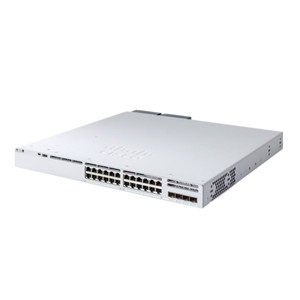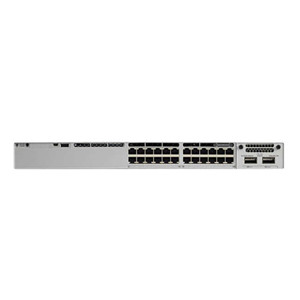Do you know what is Wi-Fi 6?
 Jan 16,2020
Jan 16,2020

 Harmony
Harmony

Cisco Systems Inc. said that as the tech industry talks about 5G cellular networks, a significant part of the revolution in network connectivity will come from a more bland source: Wi-Fi.
A new version of this ubiquitous short-range connection technology, called Wi-Fi 6, will be launched this year.
Its supporters say this will bring the ability to connect more devices to one access point, as well as faster data speeds and faster response times, echoing the promise of 5G cellular networks.
What is Wi-Fi 6?
Wi-Fi 802.11ax, also known as Wi-Fi 6, is a new Wi-Fi standard designed to improve speed and performance and better prepare for the wireless future, as thousands of devices will work together Scramble for data.
Among its "predecessors", Wi-Fi 802.11b is named Wi-Fi 1, Wi-Fi 802.11a is named Wi-Fi 2, Wi-Fi 802.11g is named Wi-Fi 3, and Wi-Fi 802.11n is named It's Wi-Fi 4, and Wi-Fi 802.11ac is called Wi-Fi 5. Wi-Fi 6 is based on the new IEEE 802.11ax standard, so the two terms may be interchanged. It's the same Wi-Fi as people are currently familiar with, but with some additional benefits. The Wi-Fi Alliance (the standard organization that oversees Wi-Fi technology) lists four main benefits of Wi-Fi 6:
(1) Faster device upload and download speeds overall;
(2) greater capacity of connected devices;
(3) better performance with many connected devices;
(4) lower device battery consumption when connected
All in all, Wi-Fi 6 is expanded based on Wi-Fi 5, which is more suitable for processing a large number of data requests at the same time (such as a large public space). The theoretical processing speed can reach 9.6 Gbps, which is about the current maximum speed of Wi-Fi 5. Three times.
As people move to higher-resolution video streaming, demanding higher gaming performance, and more connected devices, Wi-Fi 6 will be better suited to meet people's needs.
What is the difference between Wi-Fi 6 and "Predecessors"?
Compared to Wi-Fi 5 devices and routers, the potential performance of Wi-Fi 6 devices connected to Wi-Fi 6 routers will increase by about 40%.
This is because Wi-Fi 6 is able to pack more data into each packet, and it can work in the 2.4Gz and 5GHz bands.
Wi-Fi 6 shows even greater advantages when multiple devices are connected to the same network. Anyone who has connected to Wi-Fi in hotels and cafes knows how slow the network can be due to too many simultaneous connections.
In an article published on Intel's IT Peer Network, it claims that Wi-Fi 6 will make a single network approximately 4 times more efficient, which in turn will make the average of those congested areas connected to Wi-Fi 6 The data throughput is increased about 4 times.
With the addition of Target Wake Time (TWT) in Wi-Fi 6, the battery consumption of all connected devices will be significantly reduced.
Compatible devices and routers wake up the AC key and sleep time, which means that the adapter takes less time to start up and consumes less battery power.
This is not only important for everyday devices such as laptops and modern mobile phones such as Samsung Galaxy S10, it will also play an important role as more Internet of Things (IoT) products enter our homes and businesses.
In addition to knowing their own hardware, with the new interface icons, people can more easily know what the Wi-Fi standard they are connected to in public places.
This will depend on the Wi-Fi connected device, but one can expect that most modern phones, laptops and tablets will soon join the ranks. When connected, people will see a standard Wi-Fi icon with numbers that will tell users which standard is currently in use.
Is Wi-Fi 6 and "Wireless 5G" the same concept?
These two technologies are not the same.
Wireless 5G is a new cellular technology designed for mobile devices and always-connected laptops, while Wi-Fi 6 is an extended (and compatible) old standard wireless local area network (WLAN) technology.
You will find that wireless 5G is most often associated with cellular data, and Wi-Fi 6 is most often associated with home or office networks.
Need to buy a new router for Wi-Fi 6?
If you are using a Wi-Fi 4 or Wi-Fi 5 router and want to join Wi-Fi 6, you need to buy a new router (and need compatible equipment).
There aren't many routers to choose from, but the NETGEAR Nighthawk AX8 is the recommended one.
It has all the advantages of Wi-Fi 6, and to be sure, it is still compatible with any older device that used the previous Wi-Fi standard.
 arron@cisco-supplier.com
arron@cisco-supplier.com +86 13599513131
+86 13599513131

 Home
Home A Switch with Magical Transformation-Cisco Catalyst 9000 Series!
A Switch with Magical Transformation-Cisco Catalyst 9000 Series!  You May Also Like
You May Also Like




 Tel
Tel
 Email
Email
 Address
Address


 +86 13599513131
+86 13599513131 arron@cisco-supplier.com
arron@cisco-supplier.com +86 13599513131
+86 13599513131 Rm18e, 27/F, Ho King Comm Ctr, 2-16 Fayuen ST, MongKok Kowloon, Hong Kong
Rm18e, 27/F, Ho King Comm Ctr, 2-16 Fayuen ST, MongKok Kowloon, Hong Kong



